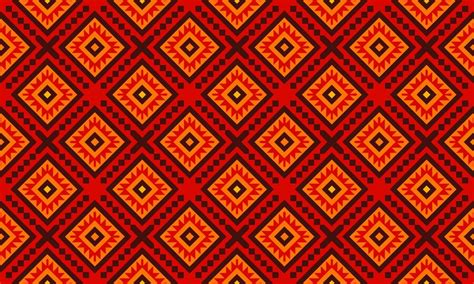Introduction
Aztec patterns, with their intricate geometric shapes and vibrant colors, have captivated designers and artists for centuries. From ancient textiles to modern interiors, these patterns evoke a sense of timelessness and cultural heritage. In this comprehensive guide, we delve into the world of Aztec patterns, exploring their history, applications, and techniques for creating your own simple designs.

History of Aztec Patterns
Aztec patterns originated with the ancient Aztec civilization in Mesoamerica (now Mexico). These patterns were deeply rooted in Aztec mythology and beliefs, representing deities, cosmic elements, and the natural world. Aztec artists skillfully incorporated these patterns into textiles, pottery, sculptures, and architecture.
Characteristics of Aztec Patterns
Aztec patterns are characterized by their bold, geometric shapes, often featuring triangles, squares, diamonds, and zigzags. These shapes are arranged in symmetrical and repetitive formations, creating a mesmerizing visual effect. The colors used in Aztec patterns are typically bright and contrasting, with turquoise, red, yellow, and black being prominent.
Applications of Aztec Patterns
Aztec patterns have gained widespread popularity in the contemporary world and are used in a variety of applications, including:
- Textiles: Aztec patterns are a staple in fashion design, appearing on clothing, accessories, and home textiles.
- Interior Design: Aztec patterns add a touch of exoticism to interiors, used in wallpaper, curtains, cushions, and decorative objects.
- Art and Craft: Aztec patterns inspire artists and crafters to create paintings, sculptures, jewelry, and other decorative items.
- Graphic Design: Aztec patterns are utilized in website design, logos, and other graphic elements.
Creating Simple Aztec Patterns
Creating your own Aztec patterns is a rewarding and accessible endeavor. Here are a few simple techniques to get started:
1. Grid Method:
* Draw a grid of squares on paper.
* Color in the squares to create geometric shapes and patterns.
2. Stencil Method:
* Create stencils of Aztec shapes using cardboard or plastic.
* Trace the stencils onto fabric or paper to create patterns.
3. Freehand Method:
* Sketch Aztec shapes freehand using a pencil or paintbrush.
* Experiment with different shapes and arrangements to create unique patterns.
Tips for Creating Stunning Aztec Patterns
- Use contrasting colors: Bold, contrasting colors will make your patterns pop.
- Experiment with shapes: Don’t be limited to the traditional Aztec shapes. Explore variations and create your own designs.
- Keep it symmetrical: Aztec patterns are typically symmetrical, so aim for balance and repetition in your designs.
- Vary the sizes: Use different sizes of shapes to add depth and movement to your patterns.
Aztec Pattern Simple-Easy: Additional Applications
1. Jewelry: Aztec patterns can be incorporated into jewelry designs, such as earrings, pendants, and bracelets.
2. Stationery: Use Aztec patterns to create unique notepads, greeting cards, and envelopes.
3. Gift Wrap: Add an ethnic touch to presents by wrapping them in Aztec-patterned paper.
4. Footwear: Aztec patterns can be used to embellish shoes, boots, and sandals.
Impact of Aztec Patterns
Aztec patterns have a significant impact on contemporary culture, transcending fashion and design. They evoke a sense of cultural heritage, foster creativity, and inspire innovation.
Conclusion
Aztec pattern simple designs are a versatile and timeless addition to any creative endeavor. Whether you’re a textile designer, interior decorator, or simply enjoy creating beautiful patterns, the principles and techniques outlined in this guide will empower you to create stunning Aztec-inspired designs. Embrace the vibrant colors, intricate shapes, and cultural significance of these ancient patterns and let your imagination soar.
Frequently Asked Questions
1. What are the traditional colors used in Aztec patterns?
* Turquoise, red, yellow, and black
2. What are some applications of Aztec patterns in fashion?
* Clothing, accessories, and home textiles
3. How can I incorporate Aztec patterns into interior design?
* Wallpaper, curtains, cushions, and decorative objects
4. What is a unique application of Aztec patterns?
* Jewelry designs
5. How do Aztec patterns foster creativity?
* By inspiring new applications and design ideas
6. What are the benefits of using Aztec patterns in graphic design?
* Add visual interest, create a sense of cultural heritage, and enhance brand recognition
7. How can I create simple Aztec patterns freehand?
* Sketch Aztec shapes using a pencil or paintbrush and experiment with different arrangements
8. What is the grid method for creating Aztec patterns?
* Draw a grid of squares on paper and color in the squares to create geometric shapes and patterns
